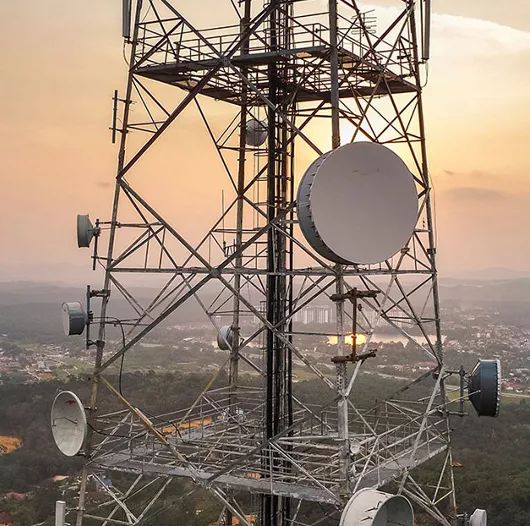5G Is Not Just Another G


Recently, businesses have expressed a lot of excitement and intrigue around 5G. But what do organizations expect from next-generation connectivity, and how will they overcome the perceived barriers of 5G adoption? That’s what I set out to explore in my recent discussion with the Head of 5G Marketing for Ericsson in North America, Peter Linder. As a top 100 5G influencer, Peter offered a unique insight into the wireless technology poised to create a larger seismic impact than any wireless technology to come before it. From expectations and concerns to plans for implementation and outcomes derived from increased efficiency, this blog illustrates my most significant takeaway from that discussion: 5G has insurmountable potential. Organizations that want to lead in the 5G race have many decisions to make.
We’ve all been trained by television commercials to think about 5G as the next evolution of mobile broadband: faster access to connect our smartphones to our favorite cloud services, especially if we live in a populated city or suburban center.
5G will deliver that, but that use is just the tip of the potential iceberg. Unlike previous generations of “G,” 5G is not just about universal connectivity for consumers. 5G is the connectivity needed for enterprise and mission-critical use that will reliably connect businesses, modernize infrastructure and power economies. 5G enables orders of magnitude more devices of far greater variety to support business digitalization. 4G was an “or” technology that forced a choice to be made where its capabilities would be focused. The decision was made to prioritize consumers as the driving market force.
5G is entirely about “and.” It’s hard to overstate the disruptive potential this 5G will enable. Its reach extends to:
At its heart, 5G’s disruptive potential lies in the complete transformation of how the network is made available, what happens inside the network, and where the many things that we call “the cloud” reside. Amazon provides a helpful metaphor:
Twenty years ago, Amazon was a single warehouse in one city. Customers placed orders from their home computers, and several days later, their book or other ordered item arrived. Today, customers are connected to Amazon from everywhere, they can buy nearly anything, and their purchase may be delivered in as little as an hour. This wasn’t accomplished by building fleets of futuristic rockets that launch products to consumers direct from Seattle. It is the result of putting warehouses closer to where the customers are, to begin with, and then substantially increasing the carrying capacity and efficiency of the delivery network.
This is, in effect, what 5G combined with edge computing will deliver across many industries. It will put the processing close to where it’s needed, delivering services without requiring the end device to change.
Similarly, we are poised to see this increased efficiency, productivity and automation explode across all aspects of services, production and distribution. The interplay of five technologies that will be worth exploring:
The possibilities brought forth by 5G are extensive and increasingly make possible a world where the only limitation is imagination and not technology. Here are six business use case applications for you to consider:
With commercial 5G networks already live worldwide, the next wave of 5G expansion will allow organizations to digitalize with more mobility, flexibility, reliability and security. Join Peter and I at the HSIF technical session Get Ready for 5G’s Industry Disruption and Opportunity for a dynamic exchange of ideas around 5G’s true power and potential. From trends and technology drivers to specific use cases, this session will broaden your 5G perspective and offer insights that will change the way you make operational decisions. Register here.
Additionally, for a more holistic view of the end-to-end digital solutions, like AI, cloud computing and industrial IoT technologies that drive sustainability across manufacturing and supply chain functions, be sure to attend Sudhanshu Gaur and Alan Minney’s business session: 5G: Accelerating Transformation for Manufacturing. Register here. These industry experts from Hitachi Vantara and Ericsson, respectively, will weigh in on Hitachi’s data-driven approach to industrial digitization and the unique opportunities that stem from creating a more connected and intelligent enterprise.
Whether companies are ready for it or not, customer demands are constantly evolving, particularly in the industrial sector, where fluctuating needs directly impact the market’s access to products and services. The best way to future-proof your business is through increased resilience, efficiency, transparency and accessibility, and technology is the smartest way to achieve that. As we move toward a more personalized, data-driven tomorrow, the time to invest in the digital connection between our processes, machinery and people is today.
Get a front-row seat to the future of Social Innovation. Join us at the virtual Hitachi Social Innovation Forum on May 25-27. Register here.
Bjorn Andersson is Senior Director, Global Industry Solutions Marketing at Hitachi Vantara.
Peter Linder is a 5G evangelist and Head of 5G Marketing for Ericsson in North America. His professional focus is on anything 5G and digital marketing. Onalytica ranked him as the #1 most influential expert across all tech sector topics on LinkedIn in 2020. He aspires to make you understand 5G more clearly and more in-depth, so you can truly grok 5G and maximize your impact on its use in your company. Peter’s professional career encompasses nearly 30 years at Ericsson, double master’s degrees from Chalmers University, and extensive post-graduate education at Ivy League universities. His pet project is a digital mentoring program with more than 200 episodes released to date.

Bjorn has worked in technology development, product management and marketing for +25 years, with a focus on sustainability, digital transformation, analytics, visualization, HPC and IoT. Today, he provides strategic leadership for select industry practices at Hitachi Vantara.